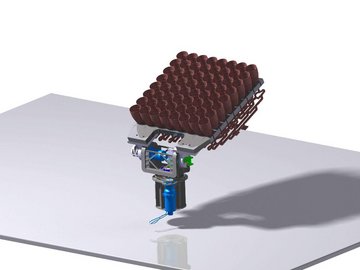Brief Description
The project LISA (lightweight inter-satellite link antennae) encompasses the development of novel, mechanically and electrically steerable spaceflight antenna systems for the on-orbit communication between satellites, i.e. inter-satellite communication. Antenna systems for S-band and Ka-band were developped in cooperation with industrial and academic partners.
The mechanically steerable system consists of a two-axes / two degree of freedom stepper-motor driven mechanism for endless azimuth and 0-90° elevation control. For Ka-band, it also features an integrated two-axes waveguide coupler.
The Ka-band antenna (40 x 40 cm) consists of copper galvanic arrays for Ka-band, optimized for high gain.
The electrically steerable antenna system employs liquid crystal phase shifters for steering of small beam angles (+/- 11°) without mechanical parts.
Typical applications of such Ka-band antenna systems include geostationary relay satellites, covering communications to and from lower orbiting satellites. In this scenario, the geostationary antenna has relative modest requirements for tracking speeds, while the corresponding antenna system on the lower orbit, faster satellite typically has higher angular and velocity requirements. Both systems have high accuracy pointing requirements due to the small beam width of high gain Ka-band systems. Especially for tele-operated, highly agile on-orbit servicing missions, the antenna systems must deliver high precision at high speeds.
Ka-band is used for high data rate links such as those necessary for science and earth obseravtion missions or video-supported teleoperations missions.
